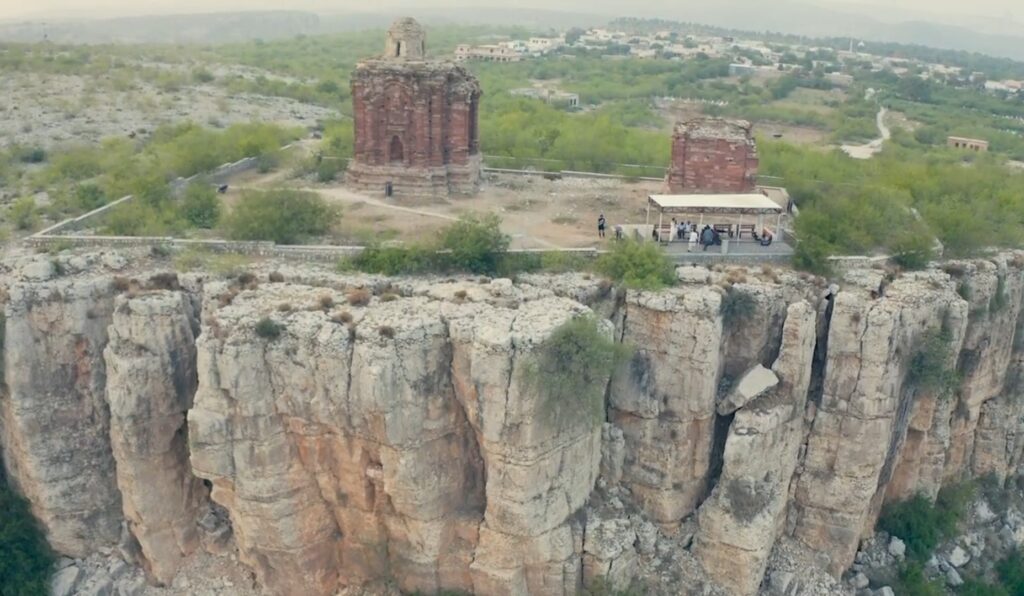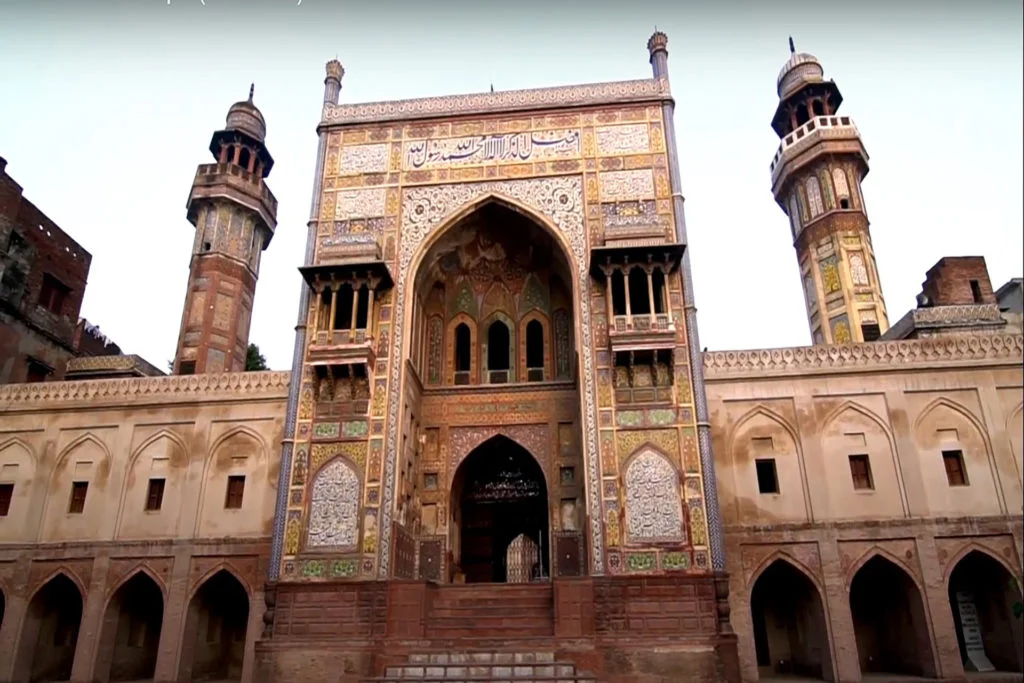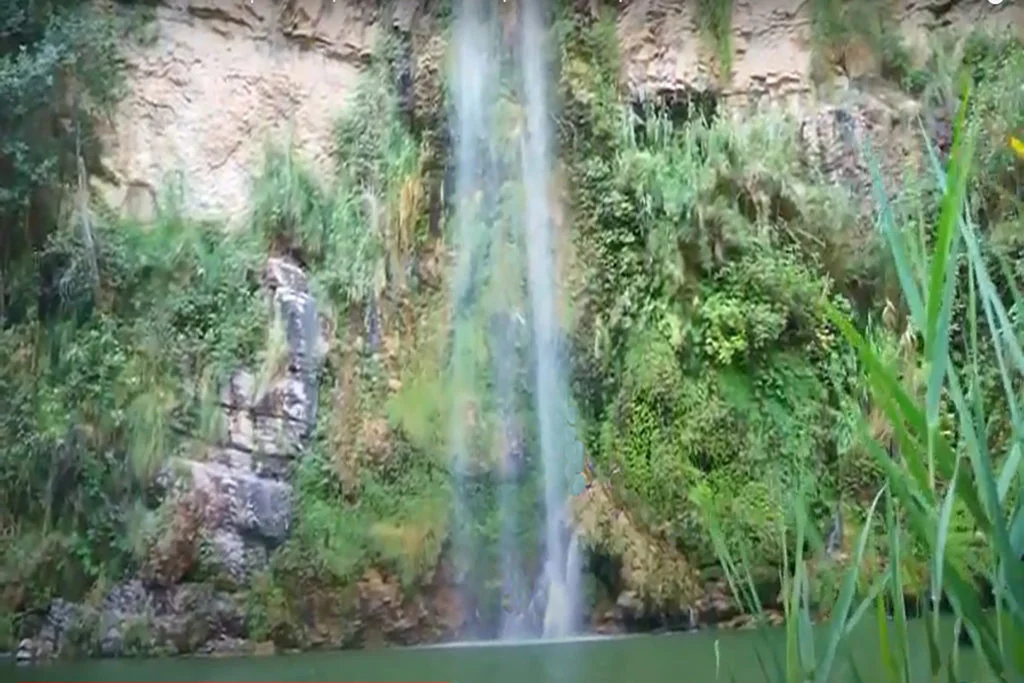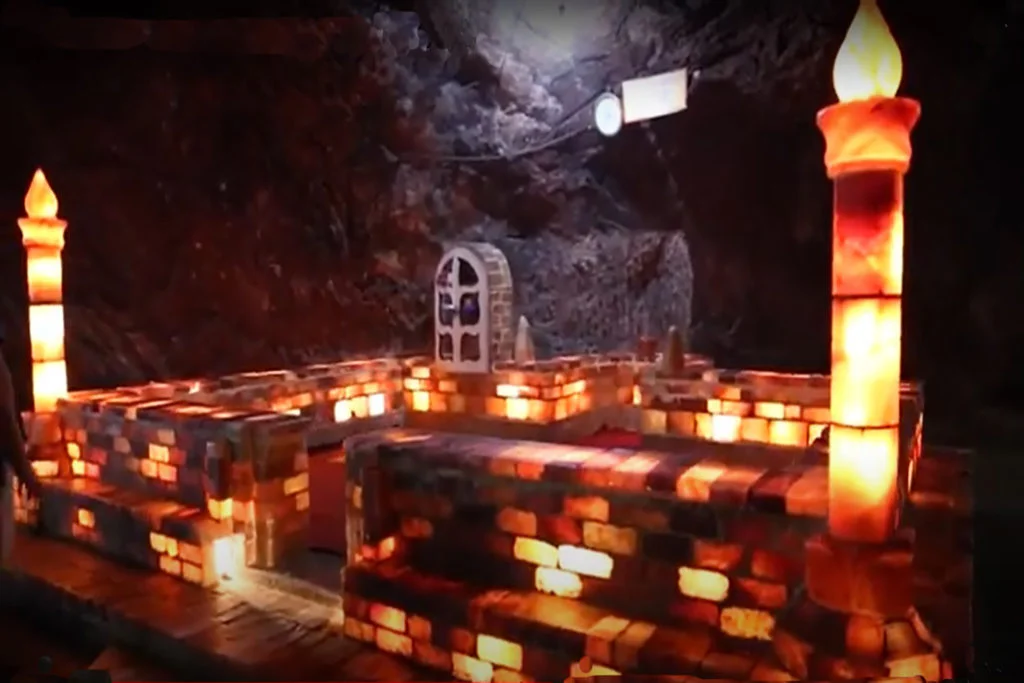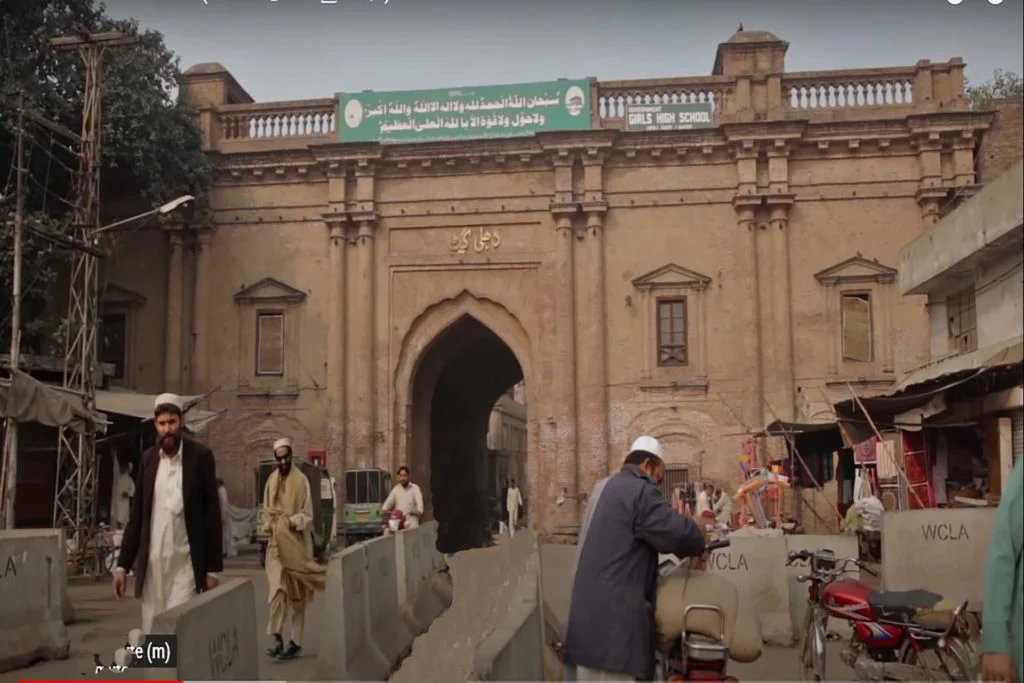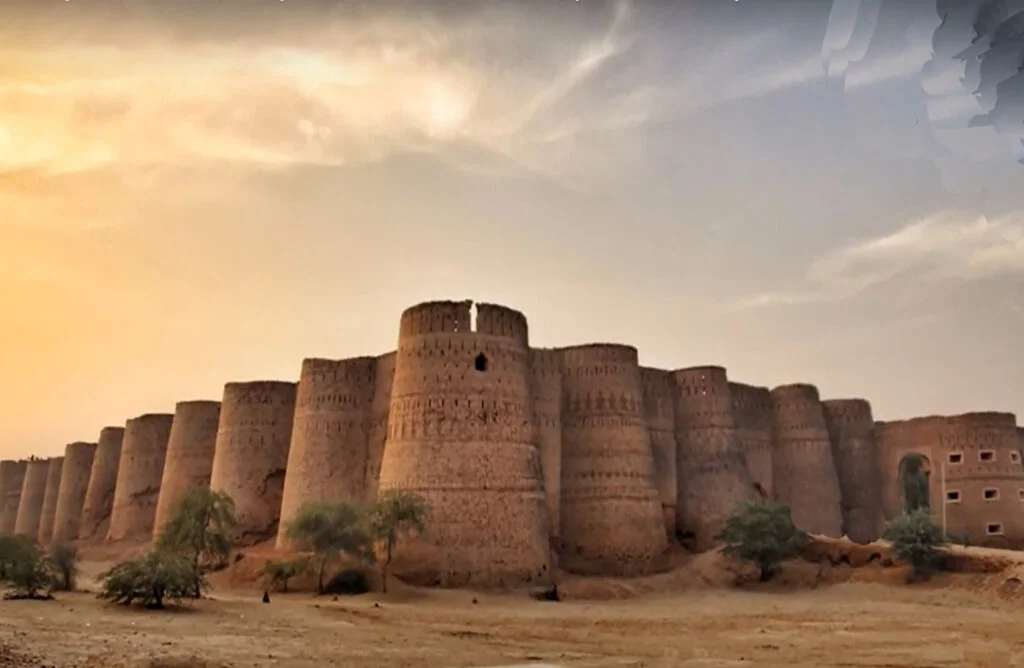Malot Fort, also known as Malot Qila, is a temple fortress situated in the Chakwal District of Punjab Province, Pakistan. It is nestled within the Salt Range near Kalar Kahar. The fort carries a rich history and exhibits a unique blend of Kashmiri and Greek architectural styles.
Nestled in the Chakwal District of Punjab Province, Pakistan, Malot Fort stands tall as a remarkable testament to the region’s rich historical heritage. With its captivating fusion of architectural styles and a fascinating past, the fort invites visitors to step back in time and explore the echoes of ancient civilizations. From its construction in the 10th century AD to its architectural charm, Malot Fort is a captivating destination for history enthusiasts and curious travelers alike.
Location of Malot Fort
Malot Fort is located at the road leading to Malot village near Village Choi in Chakwal District. It is located around 40 kilometers from Chakwal city and 12 kilometers from Kallar Kahar in Pakistan.
A Tapestry of History:
Malot Fort traces its origins back to the 10th century AD, a period of transition in the region. As the decline of Greek Taxila became apparent, the skilled stonemasons of the Potohar plateau undertook the task of constructing this magnificent fort. With a deep understanding of Greek architectural techniques, these artisans created a synthesis of Kashmiri and Greek styles that still captivates visitors today.
This historical gem, constructed by the Janjua Emperor Raja Mal Khan in the 12th century, is a testament to the region’s rich and diverse history. Malot Fort holds a significant place in religious history. It is said to be the place where the last Hindu Shahi Raja Mal embraced Islam, marking a profound transformation in the region’s religious landscape. The transition of the name “Malot” is mentioned in Babur’s travelogue, “Tuzk-e-Babri,” highlighting its historical evolution.
The fort’s historical significance extends beyond its construction. It has witnessed the rise and fall of empires, the ebb and flow of power, and the convergence of cultures. The fort’s walls have stood as silent witnesses to the changing tides of history, making it a site of immense cultural and archaeological importance.
The Janjua Rajput tribe played a significant role in the early development of the Malot area. Over time, Malot was ruled by various leaders, including Sultan Sebuktegin and his son Sultan Mahmud Ghaznavi. In 1005, Sultan Mahmud Ghaznavi even conquered the Shahis in Kabul. Later, the Delhi Sultanate and the Mughal Empire took control of this region.
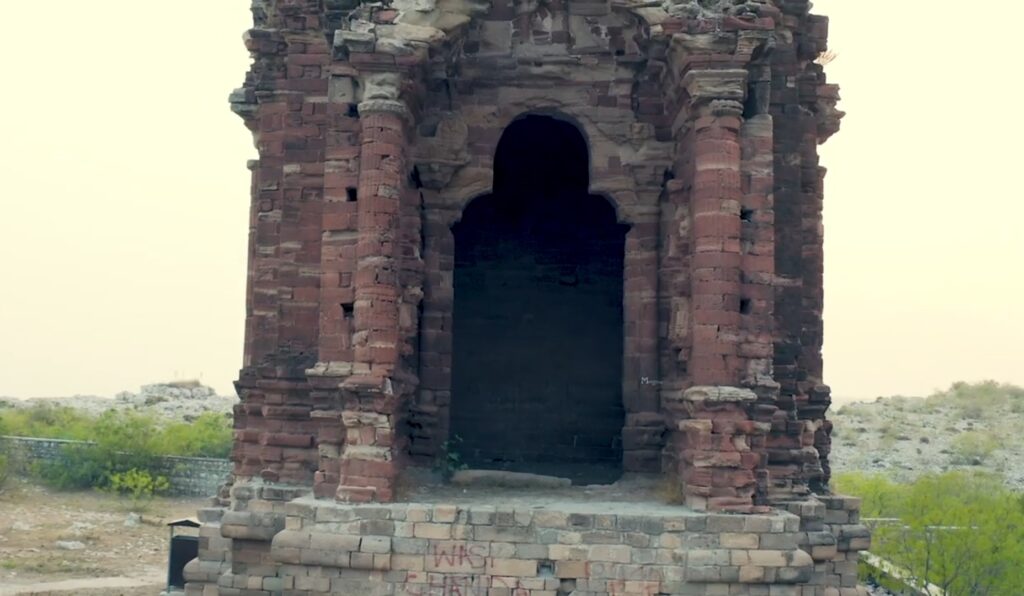
Religiously, the Malot area has a strong Muslim presence due to the influence of Sufi saints and their shrines, which are spread throughout the Punjab region.
The Janjua Rajputs, also known as Janjooa, Janjuha, or Janjuah, are a clan found among the Rajput and Jat communities in Afghanistan, India, and Pakistan. They were known for their martial skills and their rule over their kingdoms, which earned them a powerful reputation. Even the Mughal Emperor Jalaludin Mohammed Akbar’s record keeper, Abu Fazl, celebrated the Janjua Rajputs as some of the most renowned Rajputs in South Asia.
Although the Malot Fort itself has disappeared over time, two buildings of the Hindu Shiva temple within its premises still stand. These temples are adorned with Greek figures carved in red sandstone. General Cunningham, a notable explorer, mentioned these remarkable temples and structures in his travel records. On the other side of the cliffs, there are peculiar boulders that jut out from thousands of feet below, which might have once served as lookout towers.
Architectural Splendor:
Malot Fort’s architectural design is a fascinating blend of Kashmiri and Greek influences. The red sandstones, sourced from the nearby Salt Range mountains, lend the fort a striking appearance. The craftsmanship displayed in the fort’s walls, bastions, and other structures showcases the skill and mastery of the stonemasons who brought this architectural marvel to life.
Walking through the fort, visitors can admire the intricate details of the stonework, the grandeur of the gateways, and the strategic placement of defenses. The fusion of Kashmiri and Greek elements creates a unique visual experience, where each corner reveals a harmonious blend of artistic expression and engineering prowess.
Malot Temples: A World Heritage Site
Within the fort’s precincts lie two ancient Hindu temples, which are exquisite examples of Kashmiri architecture. These temples are considered a world heritage site and can be easily accessed by car. The intricate carvings and stonework within these temples are a testament to the rich artistic heritage of the region.
Neglect and Deterioration
Regrettably, like many historical sites in the Salt Range, Malot Fort is deteriorating due to neglect. The Punjab archaeology department, whose mission is to preserve and protect built heritage, has not paid sufficient attention to its conservation. Two temples within the fort have already crumbled, and wild growth now covers the ruins.
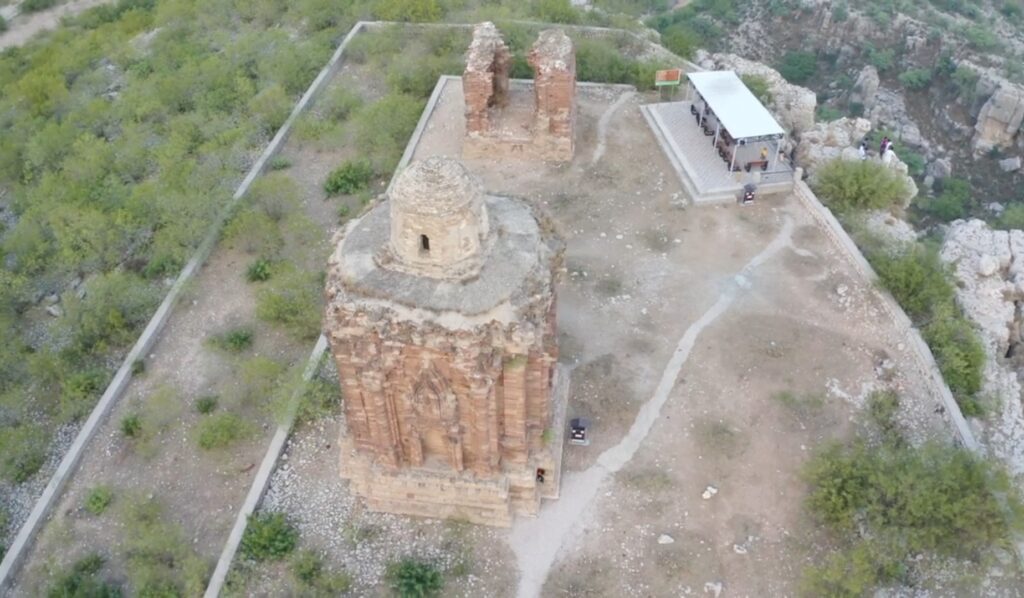
A Glimpse into the Past
Malot Fort’s historical importance extends beyond its architectural beauty. It bears witness to the rule of various dynasties, including Sultan Sebuktegin, Sultan Mahmood Ghaznavi, and the Shahis in Kabul. The era is also significant in Muslim religious history, with the presence of Sufis and Saints who resided in the region.
In the words of Sir Alexander Cunningham, who surveyed archaeological sites in the Salt Range in 1860, the facade of Malot Fort is “strikingly bold and picturesque.” Cunningham, often referred to as the father of Indian Archaeology, recognized the architectural grandeur and dignity of this historical site.
Preserving Our Heritage
Malot Fort, with its rich history and architectural beauty, deserves the attention and preservation efforts it so urgently requires. As we seek to protect and cherish our historical treasures, let us not forget the significance of Malot Fort in preserving our shared heritage.
Exploring Malot Fort:
As visitors step into the ancient corridors of Malot Fort, they embark on a journey through time. The narrow fissures formed over centuries serve as a reminder of the fort’s geological evolution, adding to its allure. Within the fort’s walls, the remnants of temples stand as a testament to the religious and cultural practices of the past. These temples, built with the same red sandstones, showcase the artistic finesse of the artisans who once thrived in this region.
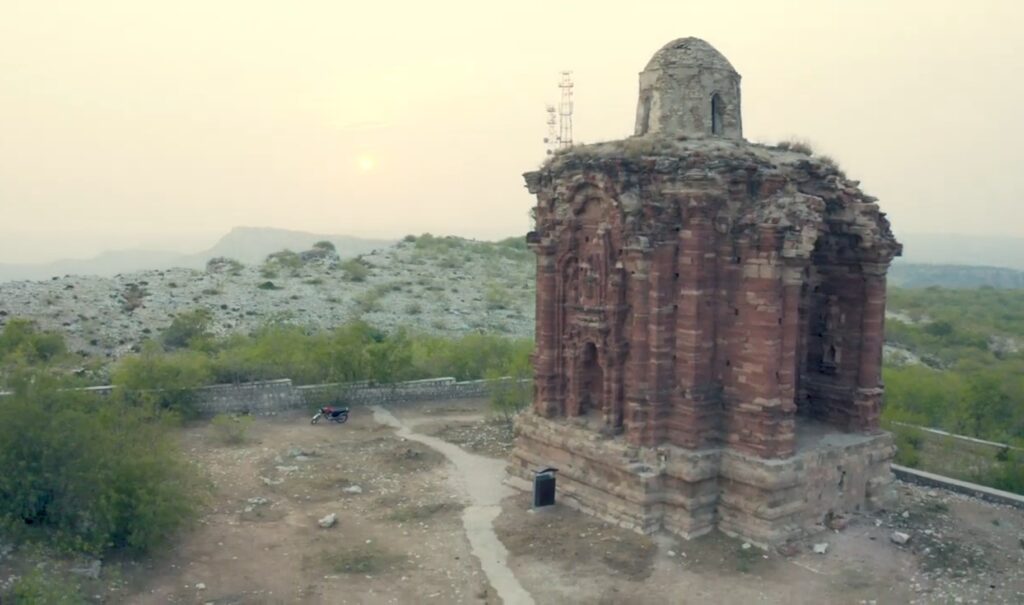
The fort’s location amidst the picturesque Salt Range adds to the overall enchantment. Surrounded by natural beauty and steeped in historical significance, Malot Fort offers a captivating experience for those seeking to immerse themselves in the tapestry of the past.
Malot Fort, with its fusion of Kashmiri and Greek architectural styles, stands as a majestic symbol of the region’s history and cultural heritage. As visitors explore its corridors and admire its intricate stonework, they become part of a narrative that spans centuries. This historical gem invites us to appreciate the craftsmanship of the stone masons and the enduring legacy they left behind. Malot Fort continues to captivate the imaginations of all who visit, providing a glimpse into the rich tapestry of the past and reminding us of the resilience of human creativity and ingenuity.

